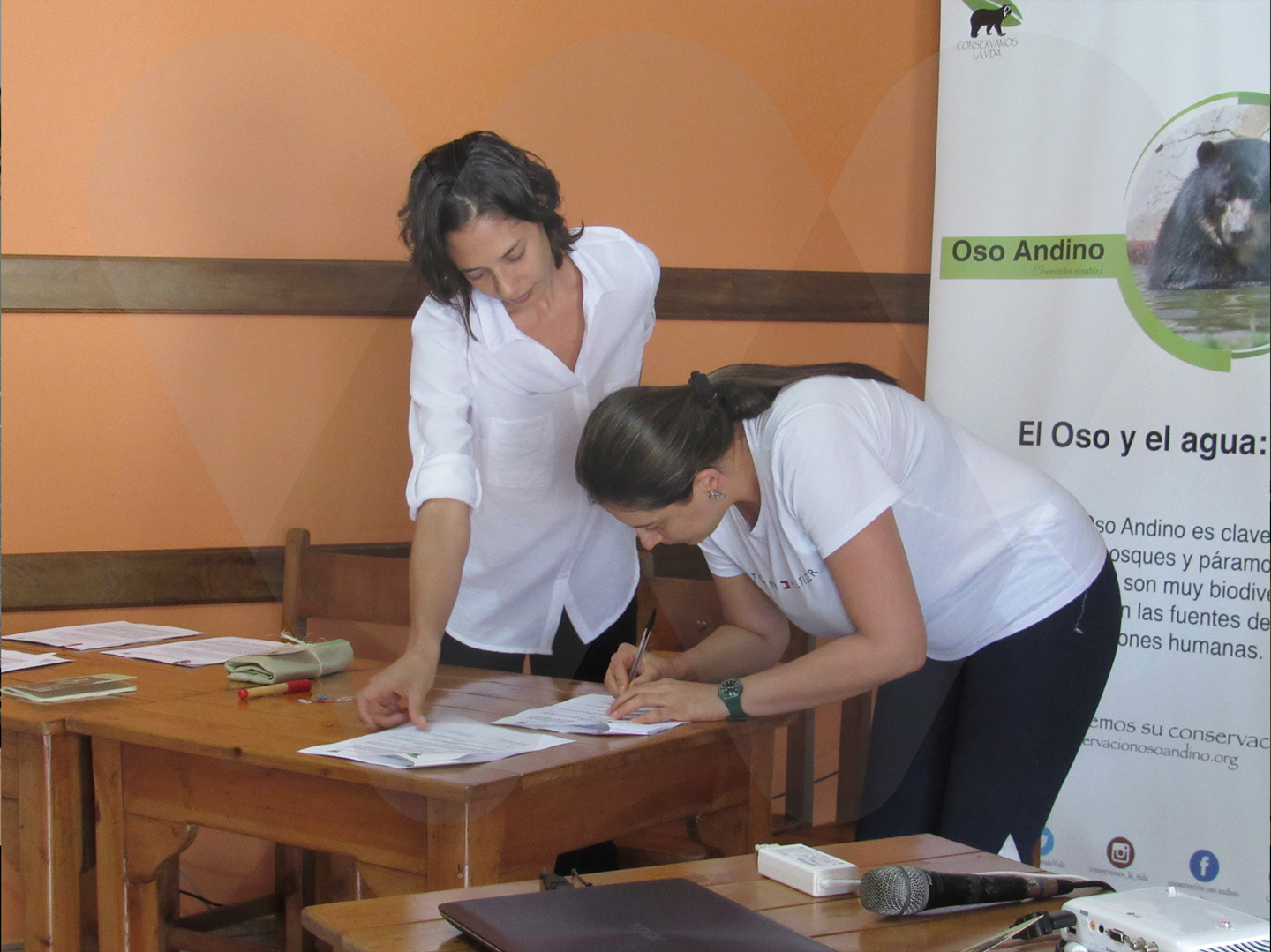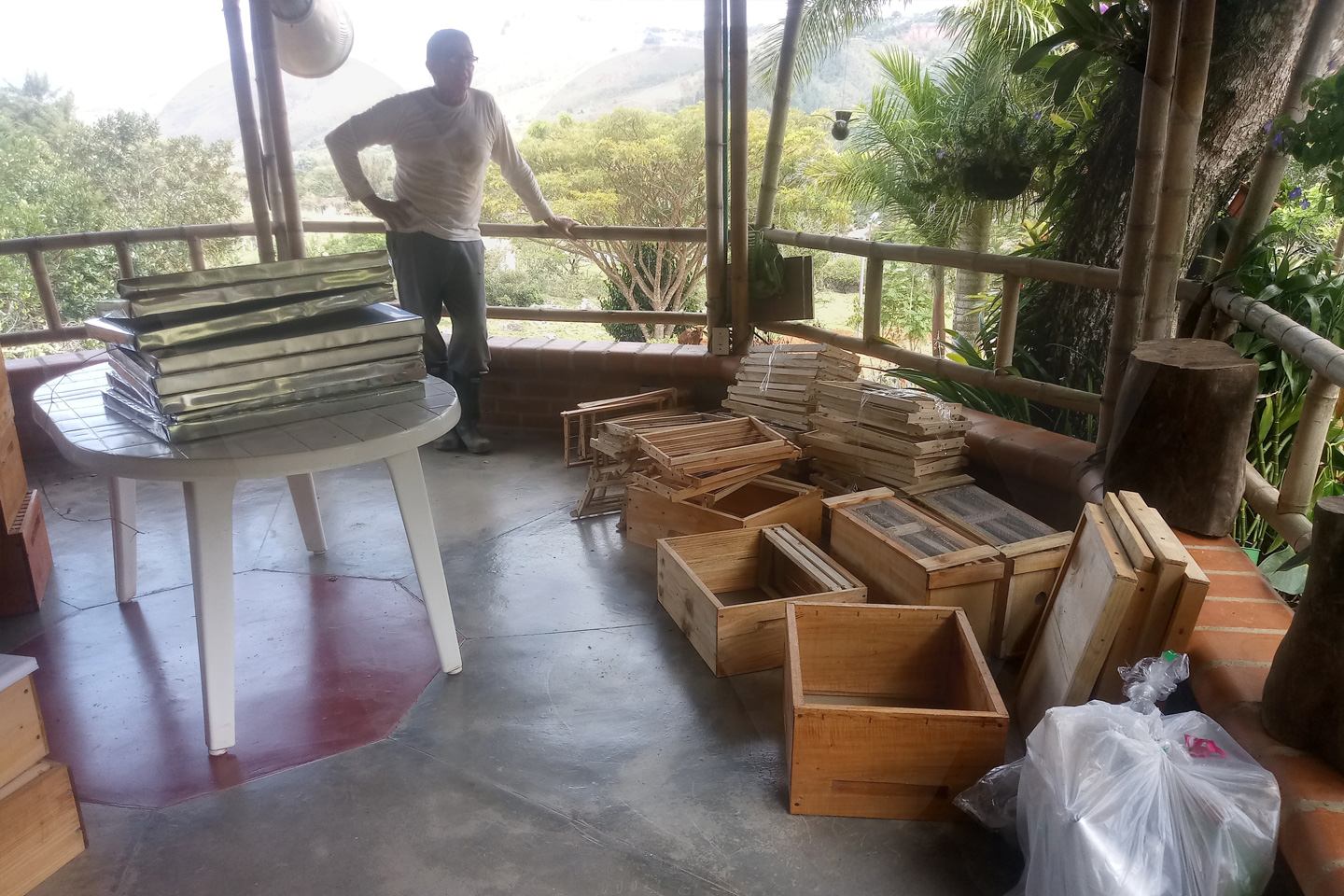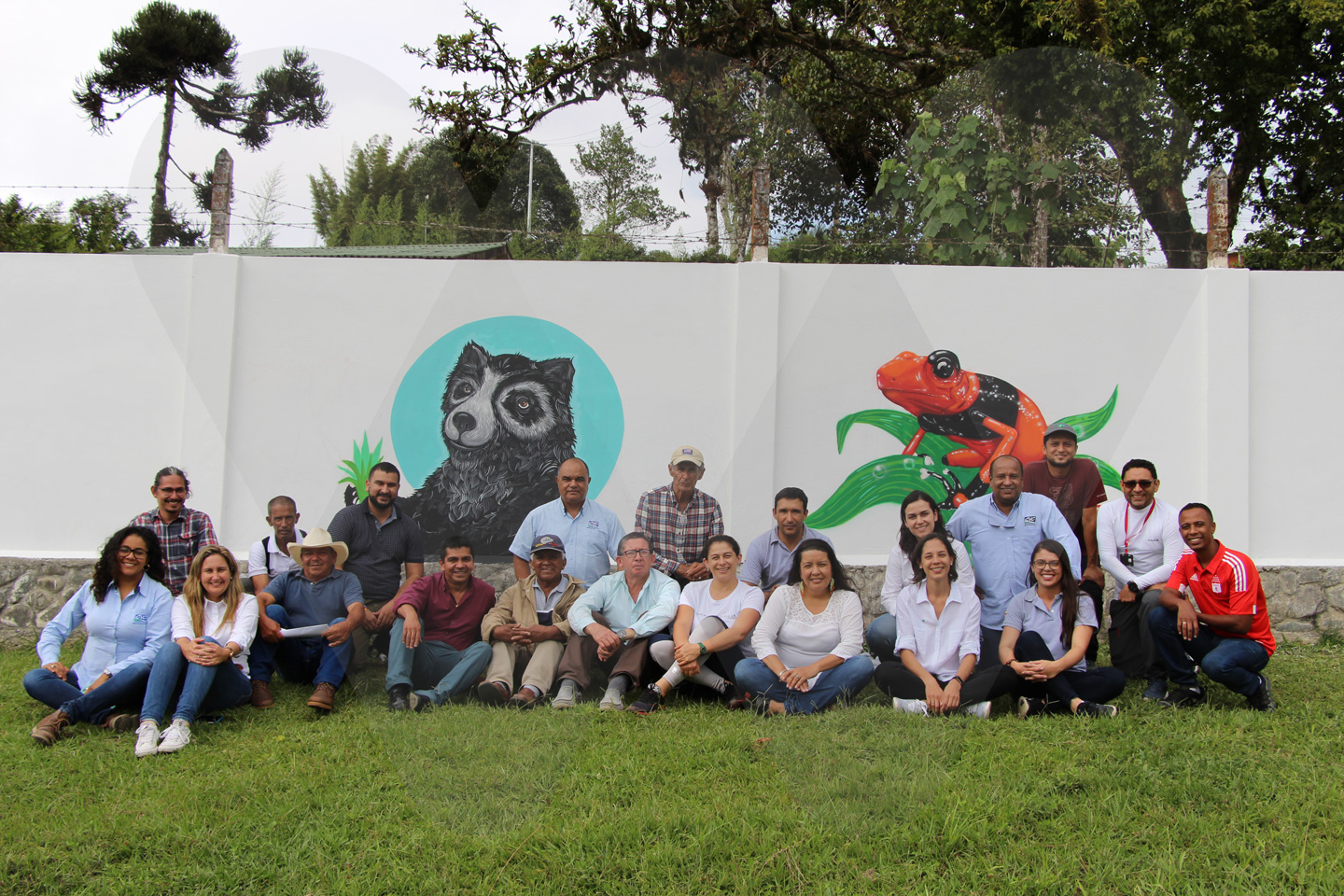In two localities of this municipality of the Department of Valle del Cauca in the West range of Colombia, stakeholders joined the initiative that allocates hectares within properties for the consolidation of a biological corridor that supports the conservation of biodiversity. In return, they received assistance to increase the productivity of their lands.

Thirteen owners of 15 properties located in the localities of San José del Salado and El Limonar, municipality of Dagua, in the Department of Valle del Cauca, decided to support the conservation of the Andean bear and, at the same time, wildlife species.
According with the objective of maintaining biodiversity, they recently signed Conservation Agreements that empower them to contribute to the protection of the Andean bear habitat.
These properties have some 71 hectares of forest remnants that can be classified as conservation zones and connectivity zones with nearby reserve areas, because they house a wide variety of wildlife.
These families have one thing in common: they admit the importance of the ecosystems present in their territories and the need and significance of their protection and preservation.
There, plant species have different shapes, colors and scents, product of their adaptations to survive in the environment.
Among them, there are individuals of the Ochroma pyramidale, known as balsa trees; of mano de oso (Oreopanax spp), caspe (Toxicodendron spp), jigua and moquillo (Saurauia spp), cordoncillo (Piper spp), trumpet trees (Cecropia peltata), as well as individuals of the Clusiaceae family that, in turn, associate countless members of the families of the bromeliads (Bromeliaceae) and orchids (Orchidaceae).
As for the fauna species, local or migratory, they maintain a close connection with the plants present in the zone, as in them they find a biological corridor that offers safe spaces for the construction of nests, rest, refuge and an important source of food. In return, the animals favor processes such as seed dispersion and pollination, among others, which guarantee, to a certain extent, the recovery of the ecosystems’ functionality, despite of being human-modified landscapes, also maintaining ecosystem services such as water provision and air quality.
The conservation agreements signed in this zone are not the only ones that intend to recover the connectivity of the bear’s habitat in the West range of Colombia. They are part of a total of 61 that the program has attained in different geographic points of the Valle del Cauca and Cauca Departments. They are known as El Águila (with reference to the municipality of Valle del Cauca with the same name), that contributes with the buffer zone of the Tatamá National Natural Park; Dagua-Anchicayá that supports the Farallones de Cali National Natural Park; and Ramal Limoncito in Cauca, in the vicinity of the Munchique National Natural Park.
Fences with native species
Through a meticulous planning of their farms, based on their present condition and how they want to see them in a few years, the 13 Andean bear protectors have undertaken actions that have favored the isolation of approximately 24 hectares of forest areas. They are using native species with sprouting ability as posts, to obtain living fences that can endure over time.

As an incentive, they received materials and supplies to improve their productive practices, in accordance with their needs. In this way, and providing their labor, they have achieved improvements in bovine pens, coffee, bee hives, subsistence crops and grasslands. They have also undertaken activities for the environmental sanitation of their homes and livestock infrastructure and have installed eco-friendly drinking troughs for their cattle.
Due to their geographical location and the presence of mountainous and semi-flat landscapes, these terrains have particular conditions that influence and favor the formation of numerous water streams, the fertility of the soil and suitable climates for the establishment of grasslands for the management of bovine cattle and the sowing of crops. The main crops are coffee, sugar cane, lulo, plantain and corn.
The community is formed by thriving and organized families that culturally depend on traditional work to supply their needs. Their source of sustenance is derived from agricultural and livestock farming activities, cornerstones of local economy
Humberto Dominguez is a local inhabitant, who has conservation agreements for two properties (one belongs to his daughter): Carare ll, Civil Society Nature Reserve (RNSC by its acronym in Spanish) and Canaan farm.
Humberto was born in the highlands of San José del Salado, in the zone where the Andean bear lives, maybe the reason for his intense connection with the protection of the species. “My motivation has always been the conservation of the bear, because when you protect a big species like this one, you are also safeguarding the life of many others”, he explains.
As an incentive for allotting part of the area of his properties for the consolidation of a corridor for the Andean bear, he has been able to install two kilometers/1.24 miles of isolations, part with living fences. “With this, we create a barrier so the animal can roam and, at the same time, we give the Cauca poison frog (Andinobates bombetes), a species frequently spotted on my properties, an opportunity of life”, adds Humberto. He has also initiated a bee breeding business, another productive initiative promoted among the people who accept the environmental commitments offered by the program.
More connectivity
The project ‘Conservamos La Vida (We Preserve Life, literal translation), led by the Argos Group Foundation, National Natural Parks of Colombia, WCS Colombia, CVC (Regional environmental authority of Valle del Cauca) and the Smurfit Kappa Foundation, with presence in this area since 2019, is in its final stages in the region.
The owners who joined the process agree in saying that it has been a meaningful experience because, at the same time that they are improving their productive systems and their quality of life, they contributed to the improvement of the connectivity between forest remnants, guaranteeing the presence of the Andean bear in the locality.
The project, additionally, has had regional impact because San José del Salado as well as El Limonar have ecosystem importance due to their vicinity to the National Protective Forest Reserve of Anchicayá and the Integrated Management Regional District El Chilcal, another of the biological corridors of this magnificent species, the only bear present in South America.
